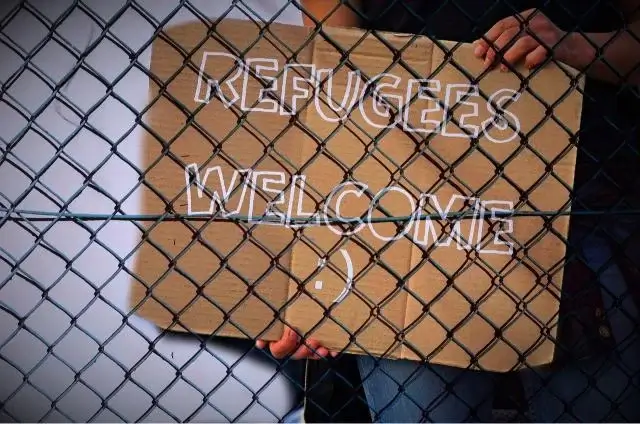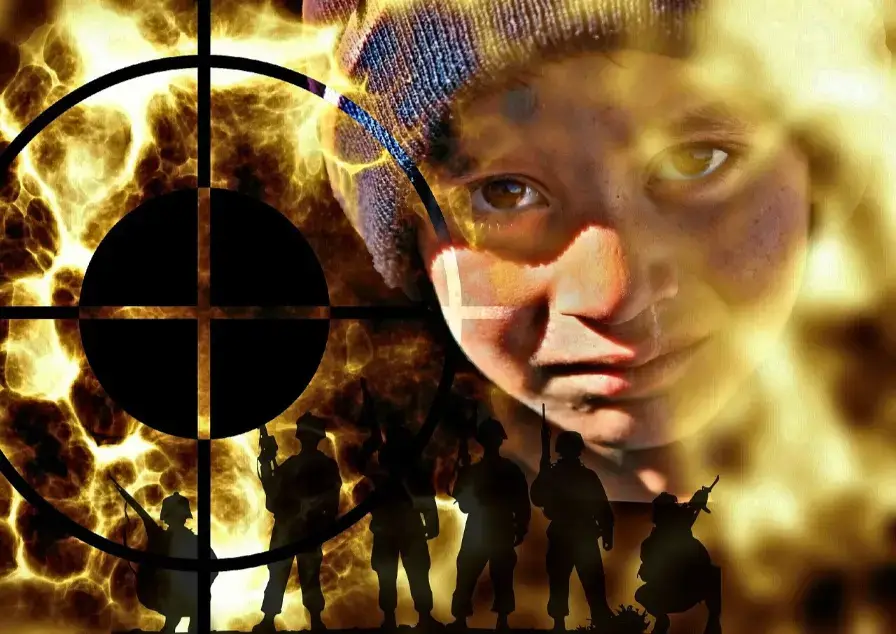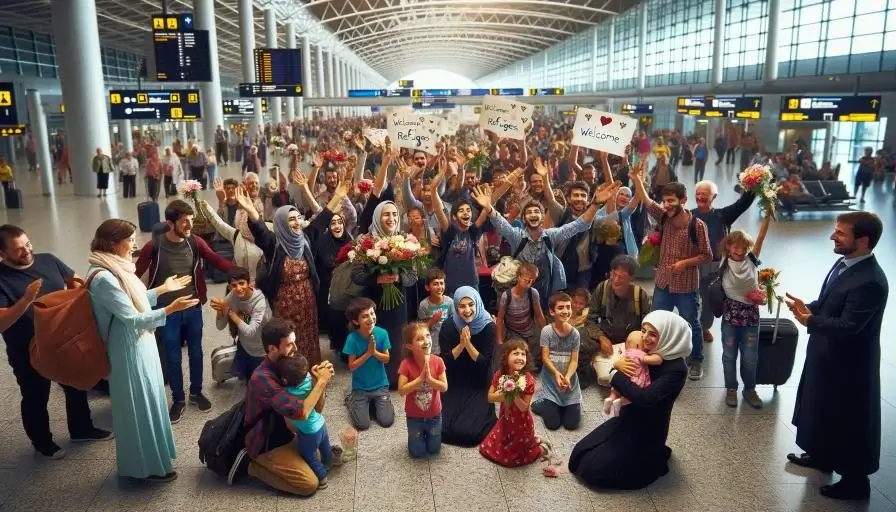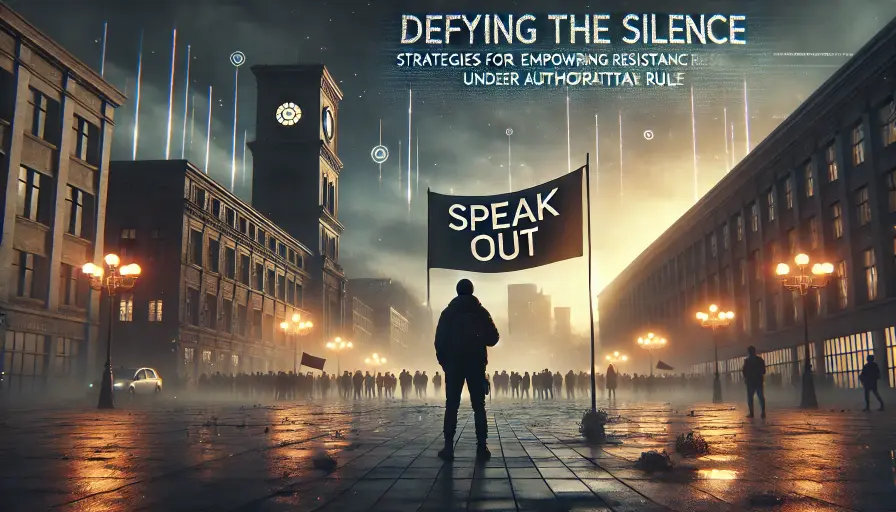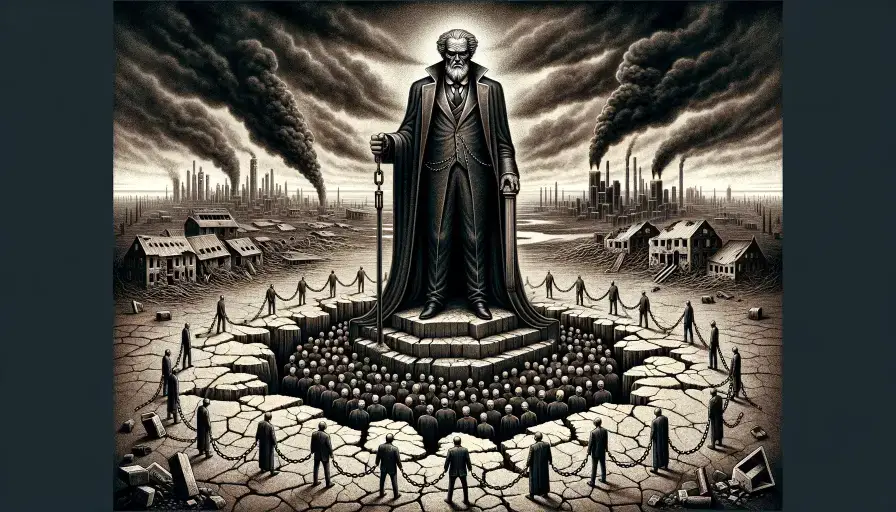The plight of refugees is a stark reminder of the fragility of life and the resilience of the human spirit. Torn from the familiarity of their homes and communities, these individuals have undertaken perilous journeys fueled by an unwavering hope for a better future.
As they arrive on foreign shores, their fate rests upon the willingness of nations to extend a compassionate embrace. Welcoming refugees is more than just a legal or political act; it is a profound moral imperative that speaks to the core values of human dignity, empathy, and solidarity.
In a world of conflict and displacement, the decision to open our doors to those seeking refuge carries immense significance, shaping the lives of individuals and the fabric of our global society.
Read on for insights that might change your perspective!
Why It Is Vital To Extend A Helping Hand to Welcoming Refugees
Humanitarian Obligation
Welcoming refugees is a moral imperative and a legal obligation under international law. The 1951 Refugee Convention and its 1967 Protocol outline the rights and responsibilities of states in protecting and assisting refugees (UNHCR, n.d.). By providing refuge to those in need, countries uphold fundamental principles of human rights and solidarity.
Helping refugees is about supporting folks fleeing their homes because of violence or disaster. It’s not just the right thing to do—it helps everyone by making our communities more robust and diverse.
Welcoming refugees fosters diversity and multiculturalism within communities. When embraced and integrated, refugees contribute to their new homes’ cultural richness and social fabric. Studies have shown that diverse communities are more resilient and better equipped to address challenges (Pew Research Center, 2016).
A win-win-win formula
Extending a helping hand to refugees creates a win-win-win situation. Communities grow more robust and diverse, enabling everyone to learn from each other. Refugees bring new perspectives, skills, and talents that enrich local cultures and economies.
They often start businesses, hire locally, and contribute to the vibrant tapestry of community life.
Supporting refugees also helps host countries show their commitment to human rights and dignity. It fosters global goodwill and enhances international relationships. At the same time, refugees rebuild their lives safely, finding new homes where they can thrive instead of just surviving.
Each act of welcoming changes lives and shapes societies for the better.
Promoting welcoming and inclusive societies
Creating welcoming and inclusive societies is essential. It allows refugees to feel at home in a new country. Communities that embrace diversity tend to be more vital and more vibrant.
Welcoming refugees brings new skills and perspectives into our communities. This boosts innovation and strengthens the economy. It’s about making sure everyone has the chance to contribute, regardless of where they come from.
By doing so, we create places where all can thrive – it’s as simple as that.
Planning and Supporting the Development of Welcoming Refugees and Inclusive Societies
Creating welcoming and inclusive societies takes careful planning. Support from local communities is critical to making this vision a reality.
Factors affecting welcoming refugees and inclusive societies
Creating welcoming and inclusive societies for refugees and immigrants is crucial. It involves understanding the factors that can support or hinder their integration into new communities. Here are some key points to consider:
1-Public Opinion: People’s thoughts about refugees can hugely impact their settlement experience. Positive attitudes lead to smoother transitions, while negative views can create barriers.
2-Government Policies: Supportive government policies on resettlement, asylum seekers, and migrants lay the groundwork for successful integration. They provide necessary resources and protection.
3-Economic Opportunities: Access to jobs and entrepreneurship opportunities enables newcomers to stand on their feet quickly. Employment is not just about earning a living; it’s also a pathway to becoming part of the community.
4-Education Systems: Schools play a vital role in creating an environment where refugee children feel accepted and can thrive alongside their peers.
5-Housing Availability: Finding affordable housing is a critical first step for refugees rebuilding their lives in a new country.
6-Community Programs: Local initiatives to foster understanding and friendships between newcomers and host communities promote inclusion.
7-Healthcare Access: Ensuring refugees have access to healthcare helps address physical and mental health needs stemming from past traumas or adjustment challenges.
8-Cultural Openness: Societies genuinely interested in learning about other cultures are more welcoming towards refugees who bring diverse experiences and traditions.
9-Safety and Security: Feeling safe in their new surroundings is fundamental for newcomers trying to overcome past fears.
10-Language Training: Providing accessible language training aids in breaking down communication barriers, making daily interactions easier for refugees.
11-Media Representation: How the media portrays refugees can significantly influence public opinion, thus playing a crucial role in fostering a welcoming atmosphere or perpetuating stereotypes.
12-Community Leadership Engagement: Leaders who actively promote diversity and inclusion within communities inspire others to follow suit, making it easier for newcomers to integrate successfully.
13-Legal Assistance – Accessible legal support helps refugees navigate complex immigration processes, ensuring they have the correct information and representation when needed.
Each of these factors contributes uniquely to building societies that welcome and value the contributions of refugees, asylum seekers, migrants, and all individuals seeking a new life away from conflict or persecution.
Importance of partnership and local engagement in welcoming refugees
Partnership and local engagement play critical roles in creating welcoming communities for refugees. Local businesses, schools, community groups, and residents working together can make a huge difference.
They provide support, resources, and a friendly environment that helps refugees feel at home. This teamwork benefits refugees and strengthens the entire community.
Cities across the country show how local initiatives lead to success stories. By engaging volunteers to welcome refugee families and fostering connections with local services, these efforts ensure that newcomers have what they need to start their new lives.
Public awareness campaigns often increase understanding and reduce barriers between the receiving community and refugees. It’s about building bridges – ensuring everyone in the community feels valued and connected.
Initiatives to Support the Development of Welcoming Communities
Building welcoming communities takes effort and dedication from everyone involved. It’s all about coming together to create spaces that support and uplift refugees, making them feel at home.
Welcome Corps Private Sponsorship Program
Innovative programs like the Welcome Corps Private Sponsorship Program have emerged to facilitate refugee resettlement and integration.
This initiative allows private citizens who make serving refugees their life purpose and organizations to sponsor refugees and provide them with support upon arrival in their new communities.
The program aims to streamline the resettlement process and ensure that refugees receive the assistance they need to thrive. The program also challenges us to look inward and outward to find harmony between our dreams, life purpose, and role in the more extraordinary tapestry of humanity.
Objectives of the Welcome Corps program:
- Facilitate refugee resettlement through private sponsorship.
- Provide refugees with essential support services and resources.
- Foster community engagement and empowerment.
Criteria for private sponsorship:
- Access to sufficient pooled resources from the local community to support the basic requirements of sponsored refugee families.
- Commitment to ensure the refugee has access to housing, healthcare, and other necessities.
- Willingness to facilitate the integration of refugees into the community.
Benefits of participating in the program for sponsors and refugees:
Benefits for Sponsors:
- Fulfilling humanitarian duty – Sponsors get to help resettle refugees directly and provide vital support, fulfilling an ethical imperative.
- Cross-cultural exchange – Interacting with refugee families allows sponsors to learn about different cultures and perspectives.
- Community building – The program fosters connections within the local community by bringing people together for a common cause.
- Personal growth – Sponsors can better appreciate others’ struggles and develop empathy.
- Economic contributions – Helping refugees integrate economically benefits the local economy through their skills and entrepreneurship.
- Positive social impact – Sponsors create a more welcoming, diverse, and inclusive society.
Benefits for Refugees:
- Facilitated resettlement – The program streamlines refugees’ arrival and adjustment process in a new community.
- Financial assistance – Sponsors provide essential financial support for housing, food, clothing, and other basic needs.
- Community connections – Sponsors help refugees build social networks and navigate their new environment.
- Educational opportunities – Sponsors can assist with school enrollments and educational resources for children.
- Employment support – Sponsors aid in job searches, skills training, and understanding workplace cultures.
- Cultural orientation – Sponsors help refugees understand local norms, customs, and ways of life.
- Language learning – Interaction with sponsors facilitates quickly picking up a language.
- Emotional support – Having a dedicated sponsor group provides reassurance and care during a difficult transition.
- Sense of belonging – The personal bonds from sponsorship help refugees feel welcomed and part of the community.
- Long-term integration – The comprehensive support system prepares refugees for successful long-term integration.
Be a Beacon of Light:
Every story of a refugee forced to flee their homeland carries immeasurable suffering, incredible resilience, and hope for rebirth. Sponsoring a refugee family through the Welcome Corps can transform heartbreak into new beginnings.
Imagine the profound impact of wrapping your arms around those who have endured unimaginable hardships, providing more than just a safe harbor—but an embrace of human solidarity that restores dignity and welcomes them into the prosperity and freedoms we too often take for granted.
The sponsorship offers a family a precious second chance at life by securing their basic needs and equipping them with the tools to thrive.
But the opportunity transcends mere charity – it is a reciprocal process of cross-cultural engagement that will expand the sponsor’s perspectives by sharing traditions, experiences, and simple human connections.
In reuniting a family torn from their roots with a new community of support, sponsors become a beacon of light piercing through their darkest struggles.
By saying “welcome” through this deed, you awaken to our shared hopes, reaffirm the highest callings of our nation of immigrants, and cultivate a more compassionate world.
Seize this chance to rewrite a narrative of suffering into one of empowerment and belonging.
Initiatives at the governmental level
Initiatives at the governmental level further support refugees and asylum seekers, building on the foundation laid by community-based methods. These efforts ensure that welcoming and inclusive communities are ideals and realities.
- Creation of specific refugee resettlement programs: The government launches programs to support refugees from their arrival. These include providing housing, language training, and job placement services.
- Legislation to protect refugees: Laws safeguard the rights of refugees and asylum seekers, ensuring they have the same legal protections as citizens.
- Funding for local integration projects: Governments allocate resources to fund education, healthcare, and social integration services for refugees, helping them become productive members of society.
- Partnerships with local organizations: Federal agencies partner with nonprofits and community groups to deliver essential services to refugee populations. This collaborative approach amplifies the impact of assistance provided.
- Public awareness campaigns: Initiatives to educate the public about the challenges faced by refugees are launched. These campaigns promote empathy and support for people fleeing conflict or persecution.
- Training programs for public officials: Law enforcement, educators, and other public servants receive special training on interacting sensitively with refugees. This fosters a supportive environment for newcomers.
- Support for family reunification: Policies are implemented to help refugees reunite with family members left behind in their home countries or scattered around the world.
- Adjustment of immigration policies: Changes in immigration law make it easier for refugees to seek asylum and obtain citizenship, ensuring they can settle permanently without fear of being sent back to danger.
- Grants for research into refugee welfare: Government funding supports studies into the long-term outcomes for refugees, aiming to improve future resettlement strategies based on evidence-based findings.
- Economic incentives for businesses that hire refugees: Programs offering tax breaks or grants encourage companies to employ people who have been granted asylum, aiding their economic integration.
Each initiative is crucial in building resilient communities where residents and newcomers thrive together. Through such comprehensive efforts at the governmental level, nations not only fulfill their humanitarian obligations but also enrich their cultural tapestry and bolster their economies by welcoming people who seek refuge within their borders.
Engaging the wider community
Engaging the broader community in welcoming refugees is crucial. It strengthens bonds and fosters mutual understanding. Here’s how communities across the country can play their part:
- Organize community events highlighting refugee contributions – Host cultural festivals or art exhibitions showcasing refugee talents. This encourages appreciation and respect for diverse communities.
- Facilitate language exchange programs – Local volunteers welcome refugees by teaching them the local language, while refugees may offer lessons in their languages. It’s a win-win that boosts communication and camaraderie.
- Implement mentorship initiatives – Pairing community members with refugee families helps newcomers navigate their new surroundings, from finding schools to understanding local customs.
- Encourage local businesses to hire refugees – Employment is critical for integrating refugees into society. Business support helps refugees become self-reliant and enriches the workforce with diverse skills.
- Engage schools in education about asylum seekers and migrants – Developing programs that educate students on why people flee their homes promotes empathy and inclusivity from a young age.
- Partner with media outlets to share positive stories of refugee integration – Positive narratives counteract negative stereotypes and highlight the benefits of welcoming refugees into communities.
- Provide platforms for refugees to share their experiences – Whether through speaking engagements or social media, giving refugees a voice raises awareness about their journeys and challenges.
- Support community sponsorship programs for refugees – These programs allow community groups to assist refugees in settling down, offering a more personalized approach to the support and resources they need.
- Advocate for policies that protect and support asylum seekers arriving in the U.S. Advocating ensures that laws and regulations reflect the tradition of welcoming people seeking protection.
- Promote volunteer opportunities widely – Make it easy for community members to find out how they can help, whether through volunteering time or donating goods or services.
Each action creates ripples, making our towns and cities more welcoming places where everyone can thrive together.
Managing Conflicting Cultural Practices During Welcoming Refugees
Creating harmony in communities means tackling brutal cultural clashes. It’s all about finding common ground and respecting different ways of life.
Community-wide planning
Community-wide planning involves everyone in the area working together to welcome refugees. Towns and cities develop plans to ensure new arrivals feel part of their new community.
They focus on arranging housing, jobs, and education for refugee families, which helps them start feeling at home faster.
Local groups, schools, businesses, and government agencies contribute to this plan. They hold events where community members can meet newcomers, which helps break down barriers and builds understanding between different cultures.
Together, they create a place where everyone belongs – no matter where they come from.
Capacity building of grassroots organizations
Strengthening grassroots organizations is crucial. These groups work closely with refugees, offering help and support where needed. They create programs that make a big difference in the lives of many who have had to leave their countries behind.
By training staff and volunteers, these organizations become more effective and learn to better meet refugees’ needs.
Developing local solid groups also encourages community members to participate. It’s about more than just giving aid; it’s about building understanding between different cultures within the community.
This approach helps everyone feel valued and supported—laying the groundwork for a society that respects diversity.
Next, we’ll examine how engaging the receiving community plays a role in this process.
Receiving community engagement
Engaging the wider community is essential for creating a welcoming environment for refugees. Town halls, cultural exchange programs, and local volunteer opportunities can help foster understanding and support.
These actions encourage members of the receiving country to open their arms and homes to those forced to flee their own countries. Refugees often find it easier to integrate into new societies through such initiatives.
The Role of Media and Legislation In Welcoming Refugees
The media and laws play a significant role in shaping how we see refugees, pushing us to open our minds and hearts.
Working with the media
Working with the media is crucial in shaping perceptions about refugees and migrants. Media outlets can spread stories highlighting welcoming refugees’ contributions to their new communities.
These stories help break down myths and foster a more welcoming environment. It’s essential for those advocating on behalf of refugees to collaborate closely with journalists.
They must provide them with accurate information and access to real success stories.
Engaging local and national media outlets encourages a balanced narrative about the arrival of refugees.
This approach counters negative stereotypes and showcases how accepting refugees benefits everyone involved—from those who find new homes to the communities that welcome them.
Partnerships between refugee advocacy groups and media professionals are vital in this effort. They ensure that coverage is fair and factual and promotes understanding across different segments of society.
Governmental attitudes
Government attitudes toward refugees are crucial in shaping public opinion. Governments play a key role in creating policies for welcoming and integrating refugees into new countries.
Their stance can significantly influence society’s perception and treatment of newcomers. Implementing policies that foster inclusivity and offer safeguarding and assistance to refugees effectively demonstrates the importance of empathy and the protection of fundamental human rights.
Many governments recognize that refugees bring talents, skills, and diversity to their communities. Adopting positive attitudes towards refugee admissions programs ensures that displaced persons find safety and opportunities to contribute to their new homes.
This approach helps build stronger, more diverse societies where everyone benefits — including long-standing residents and newcomers.
How legislation contributes
Laws play a significant role in making countries more welcoming of refugees. They set rules on how to protect people who flee their homes due to danger, helping ensure refugees can live safely and with dignity in a new place.
Countries use these rules to show they care about those in need. Creating fair laws helps everyone. It lets refugees rebuild their lives and contribute to society.
Good policies also make local communities more robust and diverse. Governments that create supportive legislation show a commitment to human rights and compassion.
Addressing Common Concerns:
Economic Impact: Some express concerns that accepting large numbers of refugees could overburden public resources like healthcare, education, and social services. They also fear that refugees could displace local workers or drive down wages.
However, numerous economic studies have shown that, over time, refugees tend to contribute more to economies than they cost. While there are initial costs for resettlement, these are often outweighed by the entrepreneurship, consumer spending power, tax revenues, and fulfillment of labor shortages that refugees provide as they become integrated.
For example, a study in the United States found that refugees from 2005 to 2014 contributed $63 billion more in revenues than they cost in expenditures. The economic benefits compound over the years with intelligent policies focused on skills training, job placement, and small business support. The statistic that “refugees from 2005-2014 contributed $63 billion more in revenues than they cost in expenditures” comes from a study by the Department of Health and Human Services:
U.S. Department of Health and Human Services (2017). Annual Report to Congress – 2017. Retrieved from https://www.acf.hhs.gov/sites/default/files/orr/arc_07_2017.pdf
Specifically, on page 5 of the report, it states:
“Over the last decade, the net fiscal cost of resettling refugees was quite low. Recently, the net cost of the domestic resettlement program has been between $1.8 billion and $3.4 billion per year, or around $15 billion over the 2005 to 2014 period, with refugees contributing over $63 billion in revenues over that period.”
So this report from the U.S. Department of Health and Human Services, which oversees refugee resettlement programs, analyzed the economic costs and revenues contributed by refugees over ten years and found a significantly positive fiscal impact of $63 billion more in revenues than costs.
Cultural Tensions: There are understandable worries that significant cultural and religious differences between refugees and host communities could spark social unrest, backlash, or parallel societies that don’t integrate. Some fear that fundamentally incompatible values may lead to conflicts.
However, communities that proactively celebrate diversity and provide avenues for cultural exchange tend to experience much smoother integration processes. Multicultural education initiatives in schools, cross-cultural events, and empowering community organizations focused on building bridges go a long way in promoting understanding.
Data shows children of immigrants assimilate faster than their parents when they feel welcomed rather than ostracized. Open and respectful dialogue about differences prevents cultural tensions from festering unchecked. The cultural vibrancy refugees bring can enrich societies immensely when approached with mutual understanding.
Security Concerns: A significant concern around refugee admissions involves ensuring proper security vetting and screening processes. No country wants to inadvertently allow entry to individuals who could potentially pose criminal or terrorist threats.
While a valid priority, these concerns must be balanced against facts. Rigorous biometric and biographical vetting protocols exist to thoroughly screen all refugee applicants and filter out any security risks. Refugees commit crimes at much lower rates than the general population, as they don’t want to jeopardize their legal status.
Ultimately, comprehensive strategies addressing root causes of conflict and violence through diplomacy and development are the best long-term solutions for reducing refugee flows. In the interim, accounting for legitimate security concerns while upholding humanitarian protection should remain the goal.
Conclusion
In a world that often sows division and stokes fears of the unfamiliar, welcoming refugees is a powerful act of reclaiming our shared humanity.
By welcoming refugees and opening our communities to those who have fled unfathomable horrors, we not only meet a moral and legal obligation but also reaffirm our society’s highest ideals and promises.
Refugees don’t just need our help—if given the chance, they possess the resolve and resilience to enrich our economies and cultures beyond measure.
Their stories, traditions, and unwavering determination to start new lives serve as a reminder of the fundamental human desire to survive and thrive in the face of adversity.
We embrace the diversity that has fueled our nation’s innovative engine and pluralistic tapestry in accepting refugees.
But moving beyond mere tolerance to create genuinely welcoming communities is a shared responsibility that requires sustained commitment at all levels, from families providing personal support networks to governments enshrining policies that uphold dignity.
It calls on us to replace anxiety over our differences with curiosity and compassion. By reaching across racial, religious, and cultural divides, we invest in the cohesion and vibrancy of the communities we hope to pass on to future generations.
The choice is not just about welcoming refugees; it’s about seizing an opportunity to shape stronger societies due to their diversity and more accurate reflections of the ideals of freedom and human equality we aspire to.
So, let us summon our boldest ambitions and most audacious convictions to build an inclusive reality by welcoming refugees with room for those who need refuge. In that act, we redefine for our era what it means to be human—together.
Let’s not forget that when we extend a helping hand, we foster a future that benefits us all.

